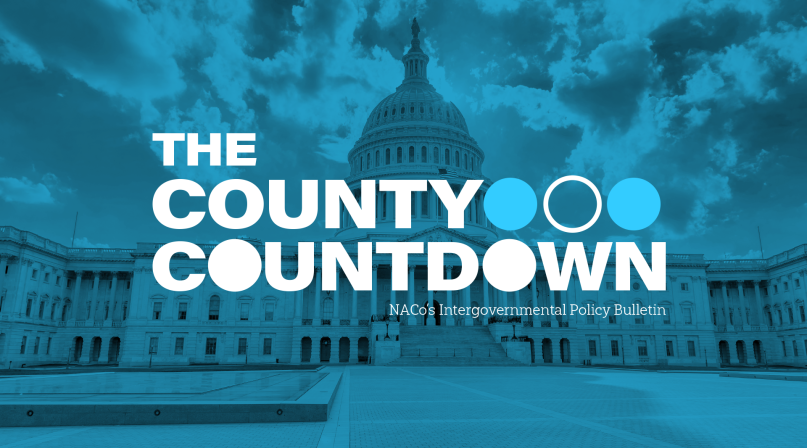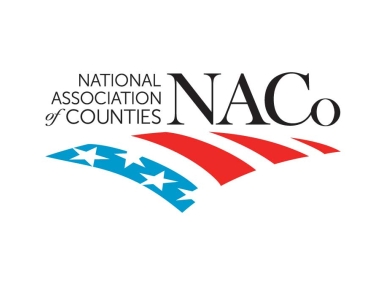County Countdown – Nov. 4, 2025
Upcoming Events
Related News

Every other week, NACo's County Countdown reviews top federal policy advocacy items with an eye towards counties and the intergovernmental partnership.
1. Federal government shutdown continues
The federal government shutdown has entered its fifth week. Continuous, predictable federal funding is crucial for counties as intergovernmental partners.
- County impact: While county governments generate over two-thirds of our own revenue to provide services to residents, counties also receive $62 billion in intergovernmental revenue from the federal government.
- SNAP at risk: The U.S. Department of Agriculture announced that the Supplemental Nutrition Assistance Program (SNAP) does not have sufficient funds for full November benefits. The White House has said it will utilize SNAP contingency funds to cover partial benefits this month, but without further action, millions of households could face disruptions, leaving counties to manage increased demand at food banks and social service agencies. Last week, NACo and the National League of Cities penned a letter to federal partners urging a resolution to provide for continued SNAP benefits.
- County advocacy: NACo continues to call on the President and Congress to act swiftly to reopen the government and restore the reliable federal partnership counties depend on. Visit our resource hub for more information.
2. SNAP work requirement regulations
Separately from the SNAP shutdown impacts, last month USDA issued guidance for implementing changes to SNAP's Able-Bodied Adults Without Dependents work requirements, as directed by the recent major reconciliation package, H.R. 1.
- Expanding work requirements: The rule would expand the number of individuals required to meet work or training thresholds to maintain SNAP eligibility, while limiting states’ ability to issue waivers.
- Administrative burdens: Counties that administer SNAP may face new administrative burdens to track compliance, update eligibility systems and coordinate with workforce boards.
3. NACo’s Disaster Reform Task Force advocates for response and recovery reforms
Last week, county leaders from across the country met with members of Congress to advocate for passage of the bipartisan Fixing Emergency Management for Americans (FEMA) Act. The bill – already passed by the U.S. House Transportation and Infrastructure Committee by a vote of 57-3 – would streamline federal disaster recovery, accelerate reimbursements and modernize FEMA programs.
- Next steps: The package now awaits a vote in the full House, and counties are also advocating for the introduction of companion legislation in the U.S. Senate.
- Additional strain on counties: During the same week, FEMA announced a $11 billion delay in disaster reimbursement payments to states and local governments, intensifying the financial strain on counties that have already fronted significant recovery costs.
- County perspective: NACo continues to advocate for faster, more transparent federal disaster funding and permanent reforms that recognize counties as essential emergency management partners.
4. Changes and funding uncertainty for the Continuum of Care program
The U.S. Department of Housing and Urban Development is seeking to cap funding for the permanent housing portion of the Continuum of Care (CoC) program, shifting resources toward transitional housing.
- Expiration date: CoC funding is set to expire in January 2026, creating the potential for disruptions in housing and support services.
- Bipartisan response: A bipartisan group of 22 lawmakers, led by House Republicans, sent a letter to HUD urging the agency to extend all existing CoC grants by one year. The extension would help prevent service interruptions, sustain continuity of care for vulnerable populations and give county governments and service providers time to adjust to HUD’s programmatic changes.
- County impact: Counties are direct CoC recipients and administrators. NACo is watching closely to ensure federal housing policy continues to support long-term stability and community-driven solutions to homelessness.
5. Bipartisan proposal to modernize the HOME program
New bipartisan legislative proposed in the U.S. House of Representatives would reauthorize and modernize the HOME Investment Partnerships (HOME) program, a critical funding stream for county-led affordable housing and community development.
- What the bill proposes: The bill aims to reduce administrative barriers, expand eligible uses and encourage partnerships between local governments and nonprofit developers.
- County flexibility: Counties would gain new flexibility to preserve and develop affordable housing, address homelessness and strengthen local economic stability. Counties support efforts that provide reliable, direct federal housing resources to meet community needs.







